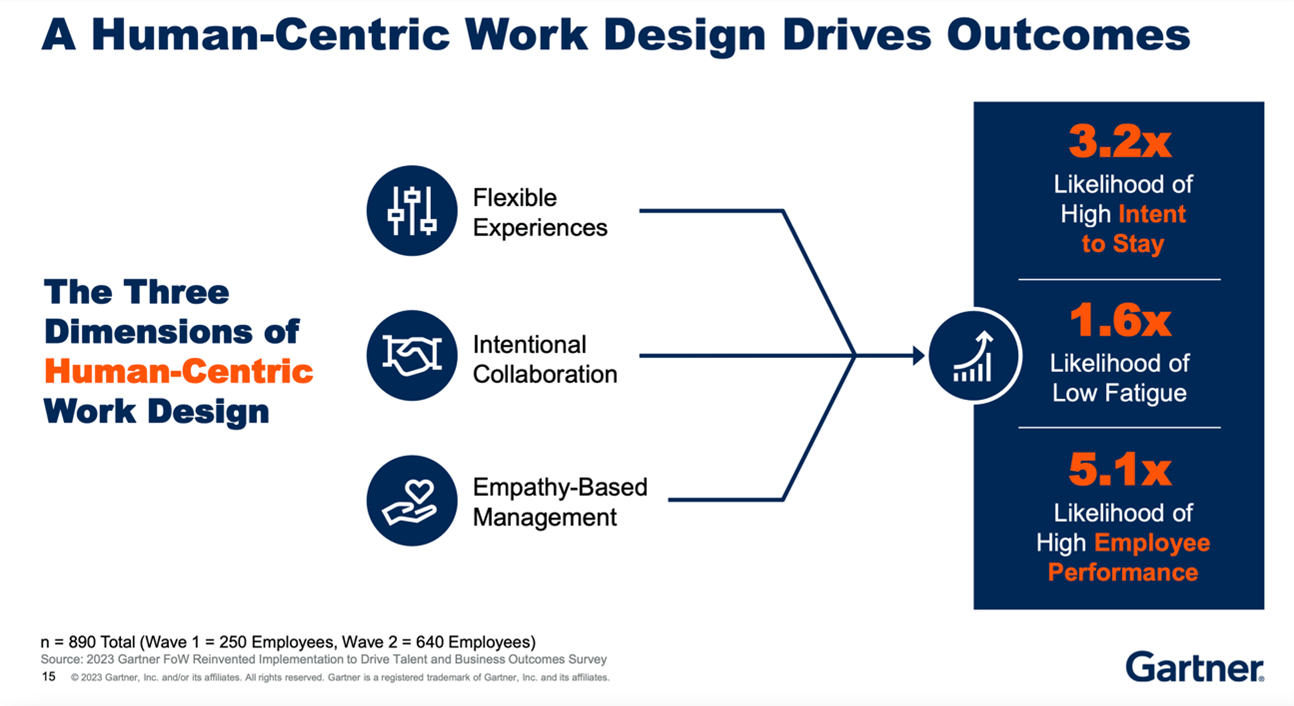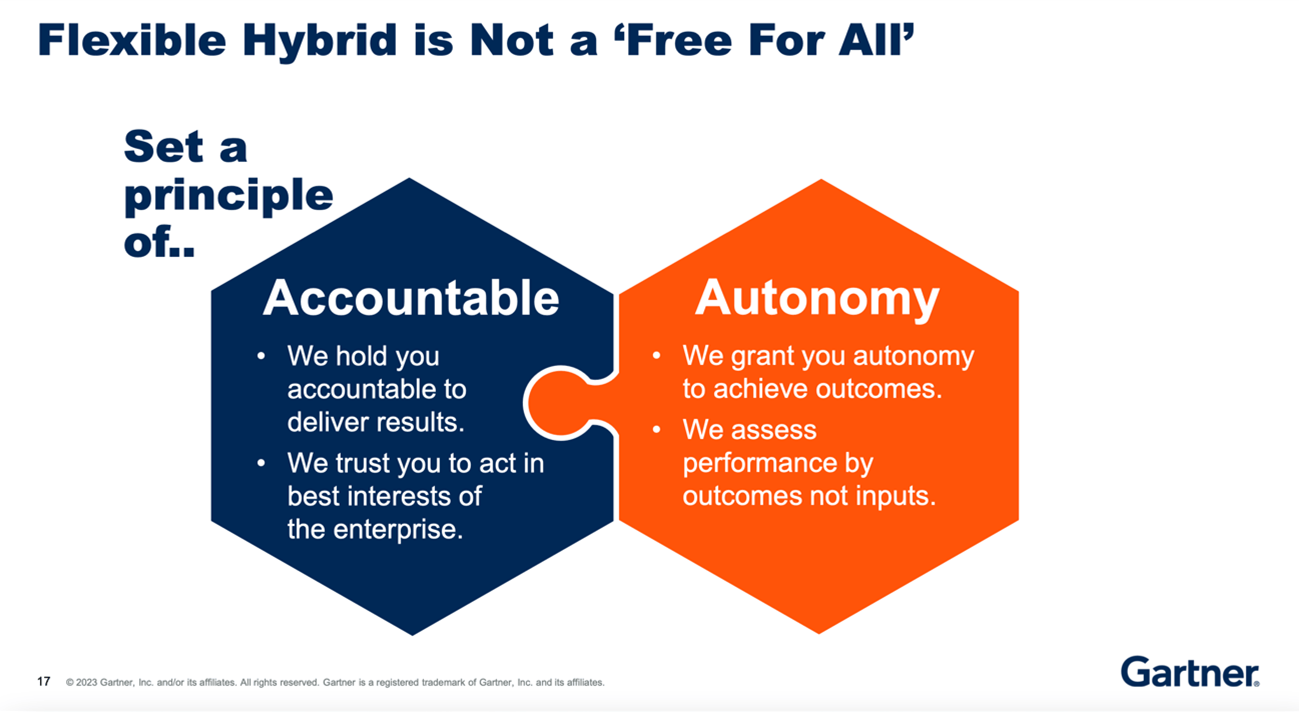Hybrid working and the future
By Paul Richmond, Managing Director.
Many conversations with leaders in professional services, at some stage, broach the topic of “How do we get everyone back to the office because we feel we are losing our culture?”
I think this is one of the classic examples of solving the wrong problem really well.
We do not actually need people back in the office. We need them to work together as a collaborative and cohesive team for the benefit of our clients.
It is just that we have a preconception that working in an office is bound to be best (because it’s the way we all grew up and seems like the sensible thing to do).
I’m not entirely convinced. During lunch with some friends over the weekend, while cajoling her into undertaking another London to Brighton bike ride, we discussed working from home vs. the office. It is worth noting she is a leading bid writer for an organisation that turns over hundreds of millions of pounds across Europe and she replied as follows…
“I went up to London last week as we were having an in-person meeting at our offices… Jesus! What possessed me to live 20 years of my life commuting for two hours each way to go into a London office…. It’s incomprehensible that anyone would want to run an organisation by mandating that you require every employee to lose four hours of their life to what is essentially purgatory… I mean, why would you do it?”
It’s a tough challenge. We expect people to work for eight hours a day and be really productive, and yet… do we really want them to start their day with a one or two-hour journey, which can be taxing, exhausting, and tiring?
So what do we do with the office?
Of course, part of the real challenge here is how much money the partners, the owners, have got tied up in real estate. If you have a building or a few floors in a block, it’s really sensible to fill it – otherwise, you have to think about who might rent it. And if everybody else who is smaller and nimbler is working remotely, you won’t have many takers…
So, we need to make it an absolute no-brainer that everybody wants to, categorically, travel to the office because they know it’s the best place to collaborate. The latest research from Gartner shows that there are advantages to using hybrid effectively:

Image 2: Gartner – A human-centric work design drives outcomes.
If you are considering how to approach it all, I would offer this McKinsey article as it identifies 5 key things you can do to ensure collaboration really works when people are together, and it’s important to understand the principles are absolutely profound:
- Never bring people back to the office just to watch them messaging each other on teams.
- Don’t expect people will work effectively by mandating they come to the office five days a week.
- Spend time on office planning and change the space so it works for collaboration.
- Give everybody reasons to connect that support your sense of Purpose.
Time management
The real challenge in professional services is that in the current traditional structure, we lack people managers. The task is given to very busy professionals who have clients as their number one priority. We do not manage people; we recruit highly skilled, highly ambitious individuals and expect them to largely get on with it, which they do as they drive themselves through their exams and career. Managing takes time, but hybrid management takes longer because, unless you are careful, you do not know whom you have seen or spoken to. Therefore, it takes more mental effort to keep track, and hybrid is not a free-for-all as this shows:

Image 2: Gartner – Flexible hybrid is not a free-for-all.
Moreover, not all work that can be done remotely should be done remotely. For example, negotiations, brainstorming, and providing sensitive feedback are activities that may be less effective when done remotely. As senior McKinsey partner Bill Schaninger observes in an episode of the McKinsey Talks Talent podcast, “We were all amazed at how much we could do working fully remotely. However, it has started showing some withering of the ties that bind in the culture [and] the social connectivity.”
The outlook for remote work, then, depends on the work environment, job, and the tasks at hand.
Hybrid work setups, where some work happens on-site and some remotely, are likely to persist. And organisations will need to refine their operating models in response. To unlock sustainable performance and health in a hybrid world, organisations can build strength in five areas:
Expand executives’ focus on strategic clarity, coaching, and empathy
The leading driver of performance and productivity is not compensation or stretch goals but rather the sense of purpose work provides to employees. Be more intentional about interactions, especially those that happen in person.
Foster outcome-based management of small, cross-functional teams
This is both more human and more effective as performance management practices shift from being about controlling employees’ work to empowering and enabling teams and people to perform.
Increase talent velocity, especially with reskilling
Being able to staff teams across organisational siloes is a hallmark of agile models. Moving in this direction for talent management might entail developing internal talent marketplaces or hubs for talent redeployment that will make it easier for people to discover potential projects. It will also involve reskilling and upskilling people more quickly than in the past, leaning on formal training, as well as apprenticeship and mentoring.
Find new zero-cost, high-optionality ways to collaborate
This can help to define a model to increase how quickly your organisation can discover and adopt better ways to collaborate, both physically and digitally. Do workers need an informal, confidential channel for banter or guidelines on making hybrid meetings more effective? Be intentional about designing these interactions and communicating expectations and working norms.
Increase the rate of technology adoption
It is imperative for firms to seek out new tech and use data to drive optimal results and make better decisions.
Conclusion
To maximise productivity, use a flexible hybrid way of working. To ensure people are well managed, set out some clear guidance around how long people should be spending with their team. It is about culture and values and understanding the importance of building strong bonds with others.
The latest research from Gallup (part of their Q12 approach) indicates that both high and low-performing teams can demonstrate members having ‘friends’ at work. But it is only high-performing teams who show that they have ‘best friends’ at work. A very small but significant difference, and we are all going to have to work hard at that when the bonds are being built remotely.
Get in touch with me by email here and let us help you to understand where you are now and how we can support you and your team to work together as a collaborative and cohesive team.